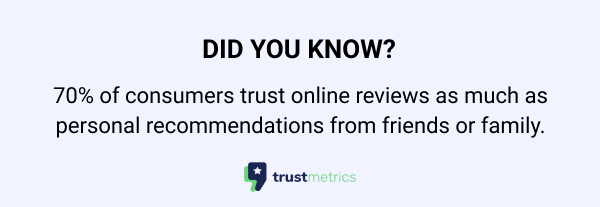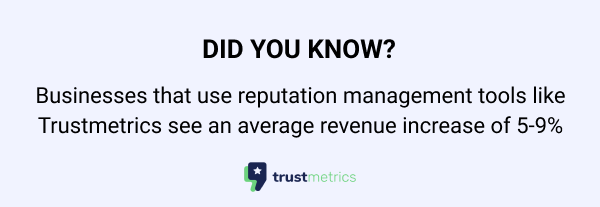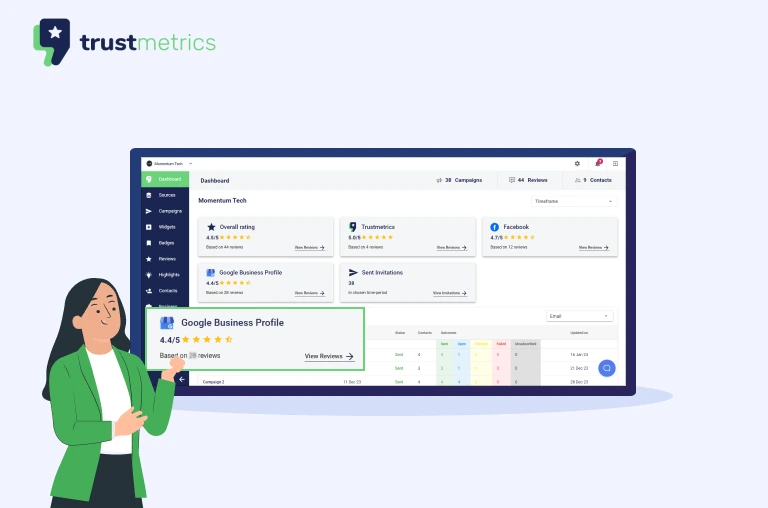In today’s digital-first world, a company’s online reputation holds immense power. Studies show that 93% of consumers rely on online reviews before making a purchase decision, meaning your business’s success can hinge on what customers read about you. A single negative Google review can tarnish your brand’s image, decrease customer trust, and lower revenue potential. That’s why effectively managing your online reputation, including addressing bad Google reviews, is essential for long-term success.
This blog walks you through how to improve your online reputation and take steps to erase unwanted Google reviews.
The Power of Online Reputation
Your online reputation is often the first impression potential customers get of your business, making it a critical aspect of your overall brand presence. A solid reputation does more than bring in new customers it builds trust and customer loyalty. A few reasons why maintaining a positive online reputation is so crucial include:
- Trust and Credibility: Consumers are more likely to trust a brand with positive reviews.
- Customer Acquisition: A strong reputation can drive new business and help retain existing customers.
- Boost Revenue: According to recent studies, businesses with a solid online presence and good reviews see higher sales growth.
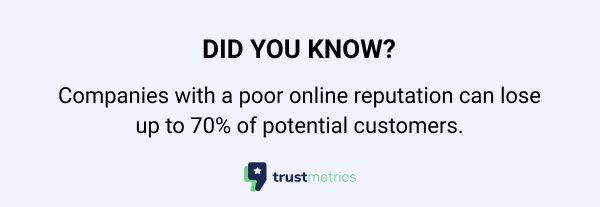
The Impact of Negative Google Reviews
Bad Google reviews can damage your business in multiple ways:
- Loss of Trust: A poor review undermines your brand’s credibility, leading potential customers to look elsewhere.
- Customer Acquisition: Fewer customers are likely to engage with your business.
- Lower Search Engine Rankings: Google’s algorithms take customer reviews into account, so negative reviews can affect your visibility.
- Revenue Decline: Less trust and fewer customers naturally translate to lower sales.
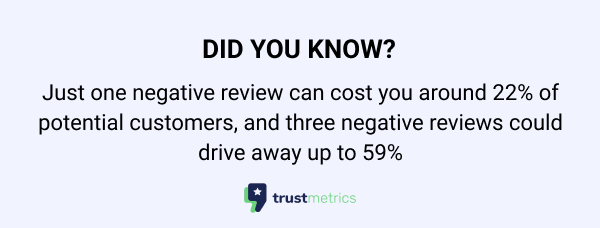
Overview of the Blog
This blog will outline the actionable steps to manage, mitigate, and remove unwanted Google reviews while offering insights into long-term online reputation management strategies.
Understanding Google’s Review Policies
Before jumping into how to remove bad reviews, it’s essential to understand Google’s review guidelines and what reviews qualify for removal.
Google’s Review Guidelines: Ensuring Fair and Authentic Feedback
Google has established comprehensive guidelines for reviews posted on its platform to maintain the integrity and usefulness of the review system. These guidelines serve as a framework to ensure that reviews are genuine, relevant, and beneficial to both businesses and consumers. Reviews that violate these carefully crafted guidelines are subject to removal. The following categories outline the types of content that Google considers inappropriate and grounds for removal:
- Spam or Fabricated Content: This includes reviews generated by automated systems (bots) or those created by competitors with malicious intent. Such reviews undermine the authenticity of the review system and provide no real value to potential customers.
- Irrelevant or Off-Topic Content: Reviews that do not pertain to the actual customer experience with the business in question are considered off-topic. These may include political statements, personal rants, or comments about unrelated issues that do not help others make informed decisions about the business.
- Inappropriate or Harmful Content: Google takes a firm stance against reviews that promote illegal activities, contain hate speech, or incite violence. This category also encompasses reviews with explicit or offensive language that could be distressing to other users.
- Conflict of Interest: To maintain objectivity, reviews written by the business owner, employees, or close affiliates are not permitted. This policy ensures that the reviews reflect genuine customer experiences rather than potentially biased internal perspectives.
- Disclosure of Confidential Information: Reviews that reveal private or sensitive data about individuals or businesses are strictly prohibited. This includes personal identification information, financial details, or any other confidential material that could compromise privacy or security.
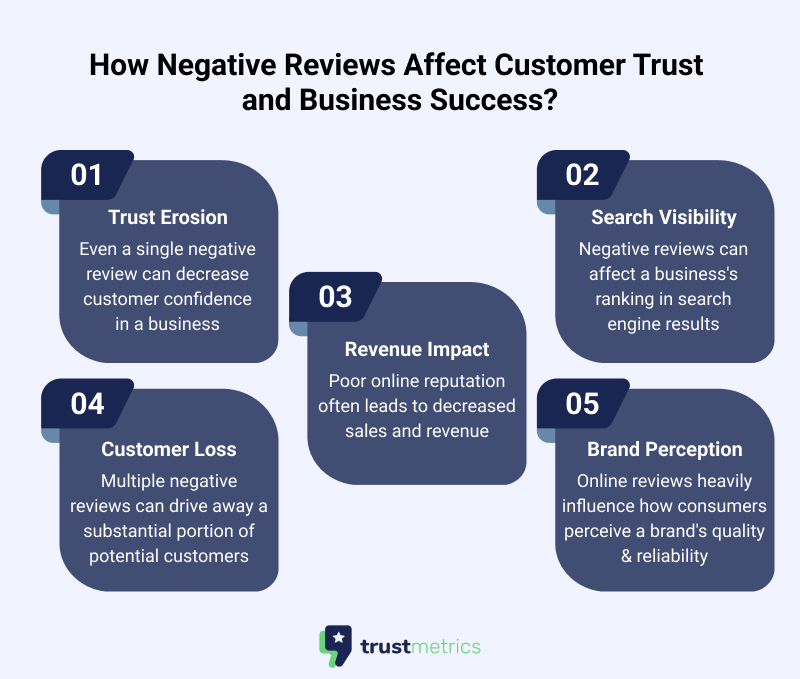
Types of Reviews Eligible for Removal: Understanding Google’s Criteria
Google has established specific guidelines for review removal to maintain the integrity of its platform. While not all reviews can be removed, Google allows businesses to flag certain types of reviews that violate their policies. Here’s a comprehensive look at the reviews eligible for removal:
- Violation of Google’s Review Guidelines: Reviews that don’t adhere to Google’s established policies can be flagged. This includes reviews that are irrelevant to the customer’s experience with the business or those that violate content policies.
- Spam, Hate Speech, or Offensive Content: Reviews containing spam, hate speech, or offensive language have no place on the platform. Google takes these violations seriously and will consider removing such content to maintain a respectful environment.
- Fraudulent or Dishonest Reviews: Reviews that are fake or dishonest, often generated by competitors or individuals with malicious intent, can be flagged for removal. These reviews undermine the trust in the review system and provide no value to potential customers.
- Disclosure of Sensitive Information: Reviews that reveal confidential personal or business information are eligible for removal. This protects both individuals and businesses from potential harm or privacy violations.
- Conflict of Interest: Reviews written by the business owner, employees, or close affiliates are not permitted and can be flagged for removal. This ensures that reviews reflect genuine customer experiences rather than potentially biased internal perspectives.
Also Read: A Comprehensive Guide to Google Reviews Best Practices for Your Website
The Importance of Legitimate Feedback: Why Some Reviews Remain
While it’s crucial to address problematic reviews, it’s equally important to understand that not all negative reviews can or should be removed. Here’s why:
- Authenticity Matters: Legitimate negative feedback, even if unfavorable, contributes to the overall authenticity of your business profile. It shows that your reviews are real and not curated, which can actually increase trust among potential customers.
- Learning Opportunities: Negative reviews often serve as valuable opportunities for growth and improvement. They can highlight areas where your business can enhance its products, services, or customer experience.
- Demonstration of Customer Care: How you respond to criticism can be just as important as the review itself. Professional, empathetic responses to negative reviews demonstrate your commitment to customer satisfaction and can turn a negative experience into a positive impression for other potential customers.
- Legal and Ethical Considerations: Attempting to remove all negative reviews can be seen as censorship and may even have legal implications. It’s more ethical and beneficial in the long run to address concerns openly and honestly.
How to Flag and Remove Bad Google Reviews?
Once you understand which reviews can be removed, the next step is to flag and report them. Here’s how to remove bad Google reviews.
Step-by-Step Guide to Flagging a Review
- Sign in to Google My Business. Log into your account.
- Access the Reviews Section. Navigate to the section where all your Google reviews are listed.
- Flag the Review. Click on the three-dot menu next to the review and select “Flag as inappropriate.”
- Choose the Reason. Google will prompt you to select a reason for flagging the review.
- Submit Your Request. Once submitted, Google will review the flag and determine if the review violates its guidelines.
Filing a Legal Removal Request
If a review contains defamatory content or severe violations of Google’s policies, you may need to take legal action. Here’s how to submit a legal removal request:
- Document the Violation: Collect evidence proving the review violates Google’s guidelines or legal standards.
- Submit the Request: File the legal removal form available through Google’s support channels.
- Follow Up: Keep track of your case to ensure the review is removed if it violates the law.
Dealing with Fake Reviews
Fake reviews are an unfortunate reality for many businesses. Here’s how you can spot and remove them:
- Check the Review Pattern: Look for identical or similarly worded reviews across different review platforms.
- Verify Reviewers: See if the reviewer has left the same kind of negative feedback for your competitors.
- Report to Google: Flag the review as fake or inappropriate using Google’s reporting tools.
Managing Bad Reviews When Removal Isn’t an Option
Sometimes, removal isn’t feasible. Here’s how to manage and respond to negative reviews effectively when that’s the case.
Responding to Negative Reviews Professionally
- Acknowledge the Issue: Thank the reviewer for their feedback and validate their concern.
- Apologize When Necessary: If a mistake was made, offer a sincere apology.
- Provide a Solution: Outline how you will address the issue to ensure it doesn’t happen again.
- Move the Conversation Offline: Offer to take the discussion offline by providing your contact information.
- Follow Up: Make sure to follow up after the issue is resolved.
Using Reviews as Feedback
Bad reviews can also provide valuable feedback. Use the criticism constructively:
- Identify Patterns: Pay attention to recurring complaints.
- Implement Improvements: Make necessary changes based on customer input.
- Showcase Accountability: When you respond professionally, it demonstrates your commitment to customer care.
Encouraging Positive Reviews
Counterbalance the negative reviews by actively seeking positive ones. You can encourage customers to leave good reviews by:
- Review Request Campaigns: Send personalized emails asking for feedback after a successful interaction.
- Simplified Review Process: Use tools like Google review badges or a Google reviews widget for your website to make the process easier for customers.
- Incentives: Offer small rewards to customers who leave positive reviews (without violating Google’s policies).
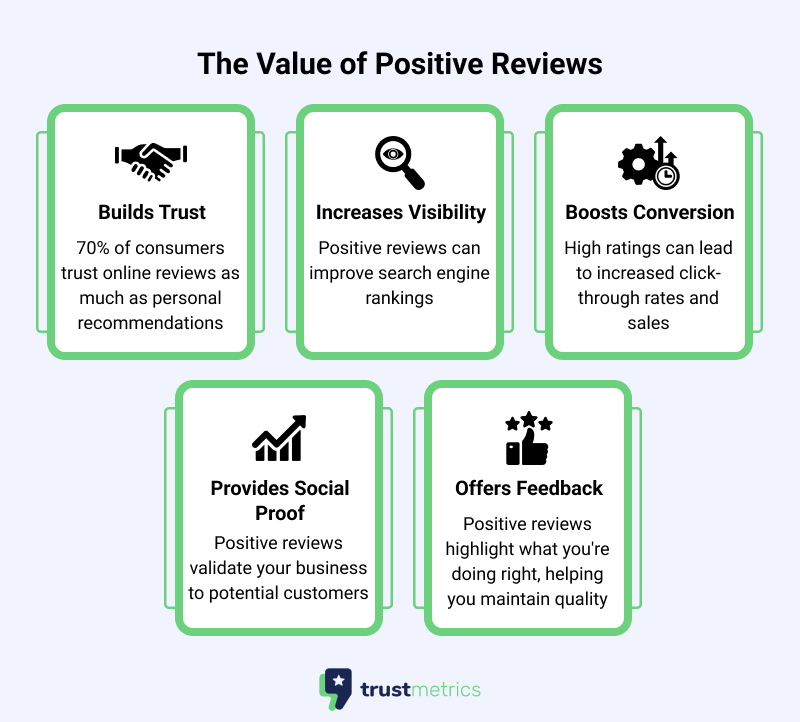
Tools and Strategies for Monitoring Your Online Reputation
To manage your online reputation effectively, you need the right tools and strategies.
Reputation Management Tools
There are several tools available for tracking and managing your online reviews, including:
- Google Alerts: Receive notifications whenever your brand is mentioned online.
- Social Media Monitoring Tools: Track mentions and customer reviews on social media platforms.
- Trustmetrics: A powerful reputation management platform that offers real-time monitoring, sentiment analysis, and automated review responses.
How Trustmetrics Can Help?
Trustmetrics provides a robust platform for managing your online reputation. Here’s how it helps:
- Real-Time Review Monitoring: Receive instant notifications of new reviews.
- Automated Review Responses: Get suggestions on how to respond to reviews quickly.
- Widget Customization: Display your best reviews in an attractive format using the Trustmetrics widget.
- Sentiment Analysis: Analyze trends in customer feedback to identify key areas for improvement.
How to Format Reviews in the Trustmetrics Widget?
Follow these steps to format reviews within the Trustmetrics platform:
- Access the Platform: Open Trustmetrics login and sign in.
- Navigate to Widgets: Select “Widgets” from the menu on the dashboard.
- Select Widget Style: Choose a widget style, such as the Floating Widget.
- Filter Reviews: Go to General Settings, and under the Reviews dropdown, click “Filter Reviews.”
- Format Reviews: Click the “Format Review” button to make your changes.
- Submit Changes: After formatting, click “Submit” to save your edits.
Also Read: Rise Above the Competition With The Best Google Review Widget
Long-term Reputation Management
Building and maintaining a positive online reputation is an ongoing effort. Consistent monitoring and quick responses can prevent small issues from escalating into major problems. Here are some best practices for long-term reputation management:
- Regularly Monitor Review Platforms: Keep an eye on all platforms where your business is reviewed.
- Respond Promptly to Feedback: Whether positive or negative, respond to reviews in a timely and professional manner.
- Continuously Collect New Reviews: Actively seek feedback from satisfied customers.
- Adjust Your Strategy: Use review trends to refine your customer service and business operations.
Also Read: Rise Above the Competition with the Best Google Review Widget: A Comprehensive Guide
Conclusion
In today’s digital landscape, your online reputation is one of your most valuable assets. By effectively managing and addressing bad Google reviews, your business can maintain trust, credibility, and continue to grow. The key steps to achieve this include understanding Google’s review policies, flagging and reporting guideline violations, responding professionally to negative feedback, utilizing advanced tools like Trustmetrics for review management, and continuously working to collect positive feedback while improving your services.
By implementing these strategies and making online reputation management an integral part of your business approach, you can harness the power of customer reviews to build trust, attract new customers, and drive sustainable growth in the digital age. Remember, your online reputation is an ongoing effort that requires consistent attention and proactive management.
Start your 7-day Free Trial
What are you waiting for? Sign up for a free 7-day trial of trustmetrics.io today!
- 7 day-free trial
- Cancel Anytime

